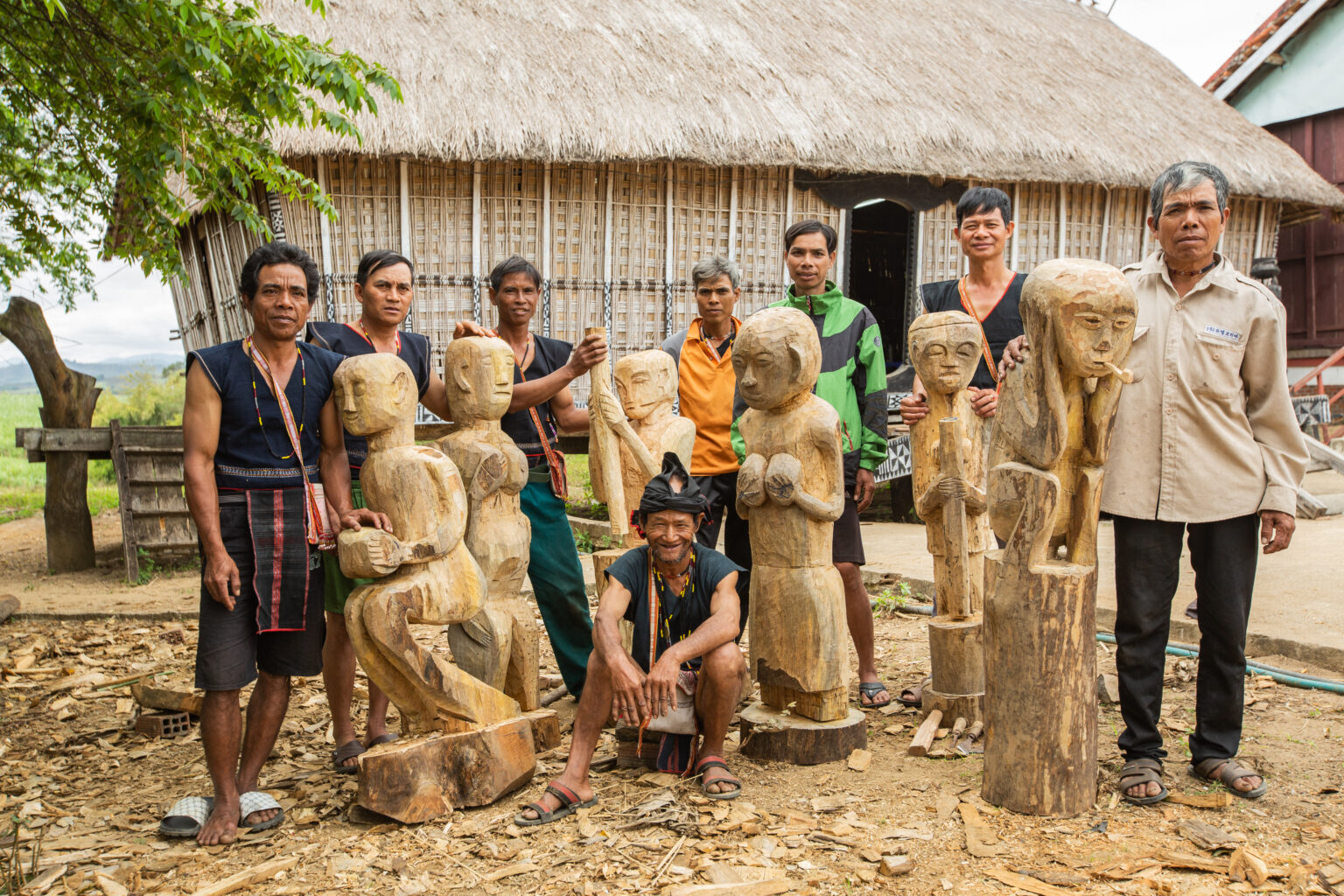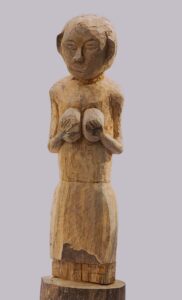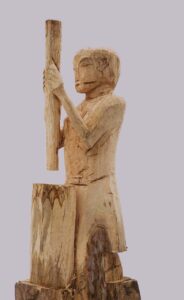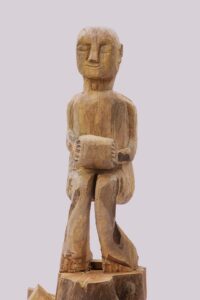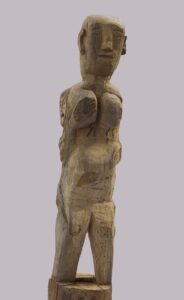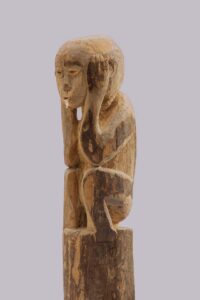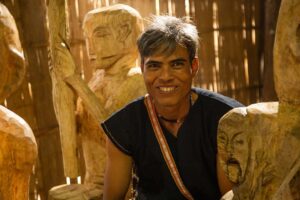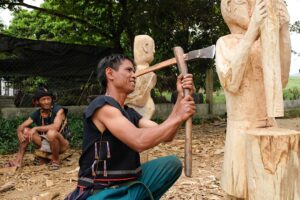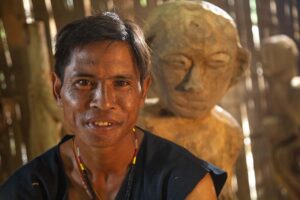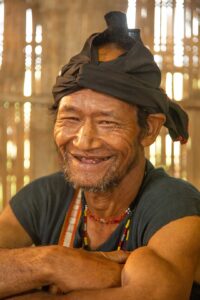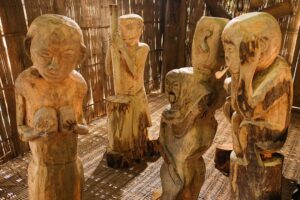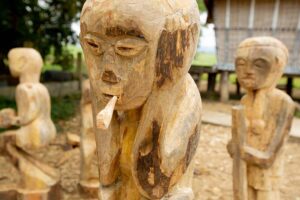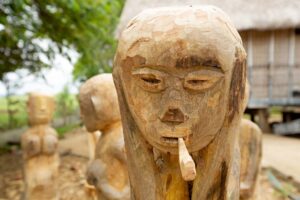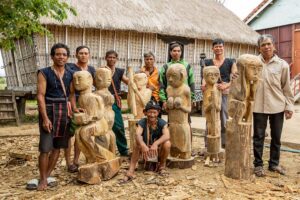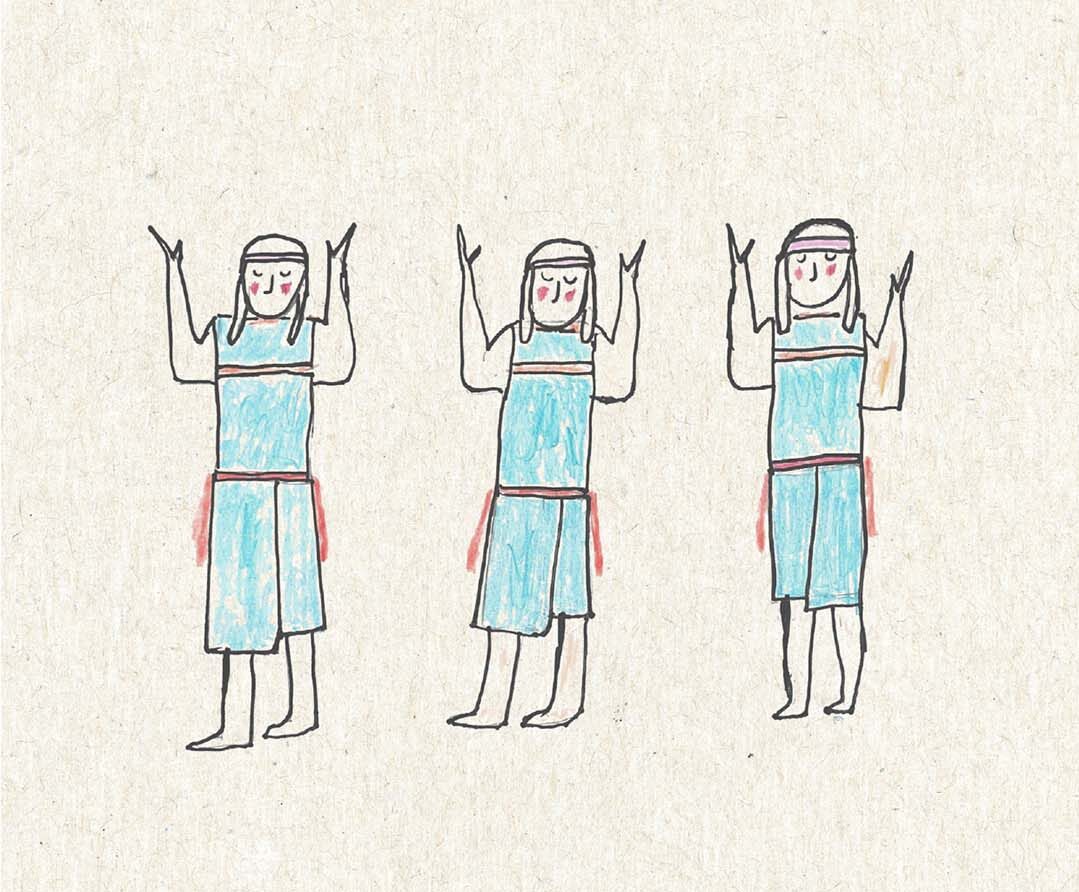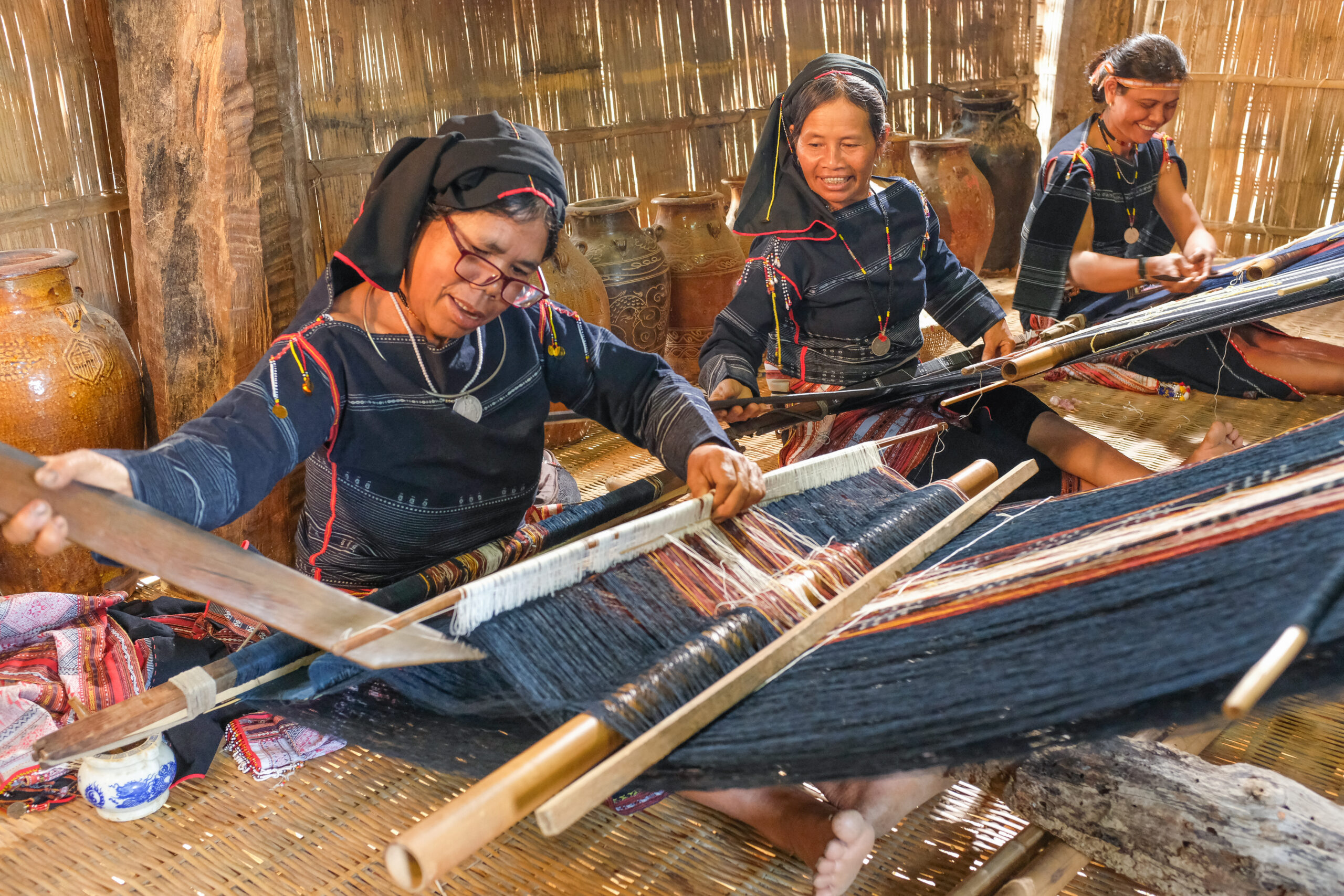The Bahnar Kon Kêdeh in Mo H'ra still have a tradition of placing handmade statues at the graveyard during the burial ceremony. After the burial ceremony, relatives will no longer visit but leave the statue as a companion and serve the dead in the afterlife. In recent decades, when many tombs were built with bricks, the demand for tomb statues also gradually disappeared over time. One of the reasons for the loss of tombstones in Gia Lai and the Central Highlands in general for a long time is the theft of wooden tombstones to resell to private antique collectors in big cities or abroad. outside. For a long time, Mo H'ra village has not had a new statue. In the village, brothers and uncles have cherished to make new wooden statues, not to send to the deceased, but to keep for their children and grandchildren and introduce people in other places to a part of spiritual life. at the village.
Dinh Alec shared:
“This statue is not for graves or graveyards, but for descendants and outsiders to see the traditions of the Bahnar people. Such is the story.”
When given the opportunity to sculpt new statues, the team at Mo H'ra started with their memories of the ancient tombs. The first time is always difficult and worrisome, when finding the trees drunk was cut down long ago in the village, everyone has to make offerings Yang (God) to promise the tree that this wood will be turned into a village statue, pray that the process of making the statue will not have an accident. Wood drunk Hard enough for the statue to be durable, the wood grain is also soft enough to carve. Sketches are drawn straight onto the wood, large strokes are separated with a large ax, then details are made with various chisels from large to small. The speed is from fast to slow, small details need attention and care to keep the original image. After the statue is considered complete, a worshiping ceremony is also performed, blessing the statue with chicken blood so that the statue can be soaked in the sun and rain without being damaged or cracked. Even to change the position of the statue, the village elder had to ask Yang's permission to put the statue in the communal house yard, instead of in the tomb area as before.
Dinh Mung recounted the process of making the statue:
“When I made a statue for the first time, I was afraid it wouldn't look good, I was very happy when I finished it, I thought I couldn't do it, but I finally did. As I do, I visualize, my hands do, my head thinks. When I finished, I felt very happy, I wonder why I didn't do it now." Statues in the shape of drum dancing, pounding rice, dancing Sinus, carrying children, are all scenes dear to the eyes of the villagers. They remember images of old men and women (parents) as inspiration for wooden statues. They remember the stories they heard and were told to refer to the process of making statues. They keep that vision of the past, to make statues for the future. In the past, only the houses in the village could afford to order wooden statues for the deceased. Now, when coming out of the tomb space, the meaning of these statues is formed by the people who made them. These six wooden statues at Mo H'ra do not need to be companions of the deceased as in the past, but are now used to guard the house space. dragon tradition in the middle of the village, existing in parallel with the life going on around.
All information posted in the Connecting Heritage Digital Collection is contributed by the community and is for reference only. The Program is not responsible for any differences from the information stated in the Digital Collection and disclaims any liability arising from the use of information from this Collection. For more information, please visit Community Rules.

